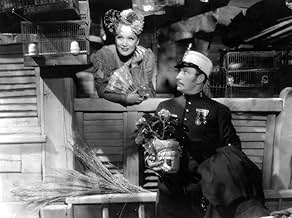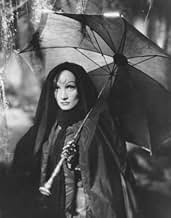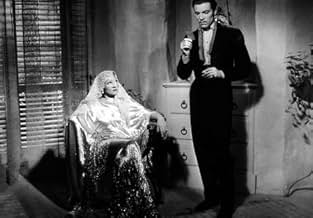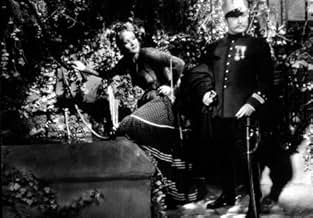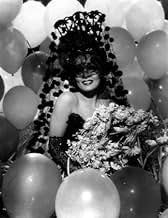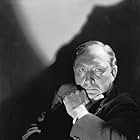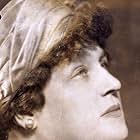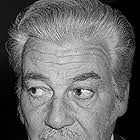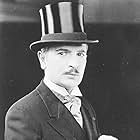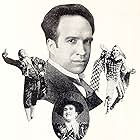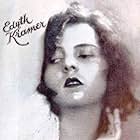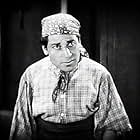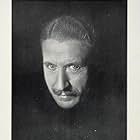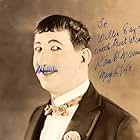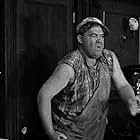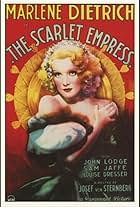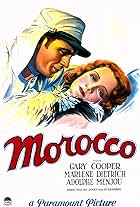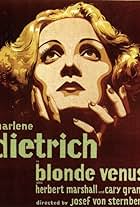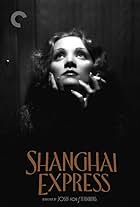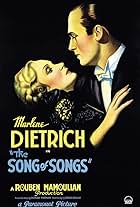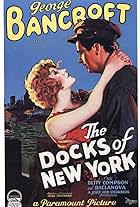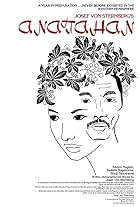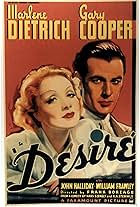A young man is warned by a captain about a temptress; nonetheless, he finds himself falling in love with her.A young man is warned by a captain about a temptress; nonetheless, he finds himself falling in love with her.A young man is warned by a captain about a temptress; nonetheless, he finds himself falling in love with her.
- Awards
- 1 win & 1 nomination
Tempe Pigott
- Tuerta
- (as Tempe Piggott)
Francisco Moreno
- Alphonso
- (as Paco Moreno)
Max Barwyn
- Pablo
- (uncredited)
Eumenio Blanco
- Minor Role
- (uncredited)
Eddie Borden
- Reveler with Balloon
- (uncredited)
Jill Dennett
- Maria
- (uncredited)
Luisa Espinel
- Gypsy Dancer
- (uncredited)
John George
- Street Beggar
- (uncredited)
Lawrence Grant
- Duel Conductor
- (uncredited)
Hank Mann
- Foreman on Snowbound Train
- (uncredited)
Edwin Maxwell
- Tobacco Plant Manager
- (uncredited)
Kewpie Morgan
- Coachman
- (uncredited)
Storyline
Did you know
- TriviaThe Spanish government threatened to bar all Paramount films from Spain and its territories unless the film was withdrawn from worldwide circulation. They protested the unfavorable portrayal of the Spanish police. Paramount destroyed the original print after its initial run, and it remained out of circulation until 1959. Marlene Dietrich herself kept a print of the film in a bank vault for safe keeping, as it was her favorite film. She feared the film would otherwise be lost. New prints were struck from her private copy in the 1980's for art house release. The superb quality of the prints in circulation now , and on DVD are because of this fact.
- Quotes
Capt. Don Pasqual 'Pasqualito' Costelar: As the devil would have it, I was in town one day with nothing to do and joined some fool committee or other that was investigating labor conditions in a cigarette factory. I'd heard there were some pretty girls there.
- ConnectionsFeatured in Marlene (1984)
- SoundtracksCapriccio Espagnol, Op.34
Music by Nikolai Rimsky-Korsakov
Played during the opening credits and as background music often
Featured review
This was the seventh and last (indeed, it had been announced as such from the outset by Paramount) of the celebrated cycle of cinematic collaborations between Sternberg and Marlene Dietrich and is said to have been both their own favorite – incidentally, with it, the two effectively came full-circle by making another film (as was their first joint venture, THE BLUE ANGEL {1930}) that revolves around a middle-aged man ruining himself for love of an ungrateful young woman. It was also the third adaptation of Pierre Louys' novel "The Woman And The Puppet" that had been much admired by the French Surrealist movement and, appropriately enough, was remade much later by Luis Bunuel in 1977 as THAT OBSCURE OBJECT OF DESIRE (which turned out to be his own swan-song).
Like that version, here we also have the long-suffering 'puppet' (Lionel Atwill in one of his best non-horror roles) narrating his misfortunes with the 'woman' – albeit to a best friend (a young Cesar Romero, replacing Joel McCrea who walked off the set after a single day's shooting!) in a Spanish cantina rather than to strangers on a train! Sill, like the earlier 1929 French version, the male lead (here renamed Pasquale) meets Conchita on a snow-derailed express where Dietrich (dressed as a nun!) takes on an unattractive gypsy female dancer and he intercedes to put an end to that struggle; incidentally, there had also been a nun passenger in the Baroncelli version but she was shown sleeping through the whole ordeal! Speaking of Atwill, he had previously acted opposite Dietrich in her first non-Sternberg Hollywood film, Rouben Mamoulian's THE SONG OF SONGS (1933) which I plan to catch up with presently; besides, Sternberg was summoned to give evidence at Atwill's 1942 trial (concerning an 'immoral' Christmas 1940 party) in which the actor infamously perjured himself and, consequently, was ostracized from Tinseltown's major league and forced to spend his last four years slumming it in third-rate (if not disagreeable) flicks!
This being an adaptation emanating from Hollywood's Golden Age, it is unsurprising to find the supporting roles filled by such amiable character actors as Edward Everett Horton and Alison Skipworth (in a bigger role – as Dietrich's mother – than her character gets in either of the other available versions) who are usually known for comedy and indeed supply some non-intrusive comic relief; equally par for the course is having Dietrich sing an amusingly suggestive number and don some of the kitschiest costumes – even if, ostensibly, she is playing a poor Spanish girl! The film is set during the carnival season and this grants Sternberg the opportunity to devise some remarkably atmospheric masks; indeed, the director must have known this was going to be his last film with Dietrich because he photographed the film himself (although the great Lucien Ballard gave uncredited support – or, rather, was learning the ropes – in his second of four consecutive films for Sternberg).
Having been made after the Hays Code came into force, the film fell victim to censorship (and even a ban threat from Spain!) but its impact still comes through; a notable change concerns the famous nude dance performed by Conchita and the humiliation endured by Pasquale at her house: celebrated novelist John Dos Passos, who adapted the Louys novel, still made Dietrich a tramp, while Sternberg displayed the power of the moment through camera-work, the décor and the elements (rain is pouring down throughout the scene! The film runs for just 80 minutes but feels somewhat longer – especially since the narrative goes on after the main story had ended in the other two versions I watched and includes exclusive incidents: a duel between the two men, a visit to a hospitalized Atwill, Conchita about to leave with Romero but deciding to stick with Atwill, etc.
I had watched THE DEVIL IS A WOMAN twice previously on Italian TV in an English-language print that was accompanied by Italian subtitles that were so large that they obscured a good part of the screen!; this new viewing came via Universal's 2-Disc Set "Marlene Dietrich: The Glamour Collection" which features two double-features on a double-sided disc (the film under review sharing disc space with Rene Clair's THE FLAME OF NEW ORLEANS {1941}) while, bafflingly, Mitchell Leisen's GOLDEN EARRINGS (1947) has a disc all to itself! Funnily enough, this being yet another case of those maligned DVD-18 discs, I was unable to start the feature by pressing the "Play" button and had to do so from the chapters menu! Incidentally, the later Julien Duvivier/Brigitte Bardot remake was alternatively known as A WOMAN LIKE Satan (while is, alas, currently available only in unsubtitled form!) and there are at least two more unrelated but notable films known as THE DEVIL IS A WOMAN: Stephanie Rothman's THE VELVET VAMPIRE (1971; which I have never seen) and Damiano Damiani's star-studded nunsploitation effort, IL SORRISO DEL GRANDE TENTATORE (1974)! Ironically enough, Sternberg had intended calling his film "Capriccio Espagnole" (which would actually be retained by the Italian release prints!) but was vetoed by Paramount's current Head Of Production, Ernst Lubitsch!
Like that version, here we also have the long-suffering 'puppet' (Lionel Atwill in one of his best non-horror roles) narrating his misfortunes with the 'woman' – albeit to a best friend (a young Cesar Romero, replacing Joel McCrea who walked off the set after a single day's shooting!) in a Spanish cantina rather than to strangers on a train! Sill, like the earlier 1929 French version, the male lead (here renamed Pasquale) meets Conchita on a snow-derailed express where Dietrich (dressed as a nun!) takes on an unattractive gypsy female dancer and he intercedes to put an end to that struggle; incidentally, there had also been a nun passenger in the Baroncelli version but she was shown sleeping through the whole ordeal! Speaking of Atwill, he had previously acted opposite Dietrich in her first non-Sternberg Hollywood film, Rouben Mamoulian's THE SONG OF SONGS (1933) which I plan to catch up with presently; besides, Sternberg was summoned to give evidence at Atwill's 1942 trial (concerning an 'immoral' Christmas 1940 party) in which the actor infamously perjured himself and, consequently, was ostracized from Tinseltown's major league and forced to spend his last four years slumming it in third-rate (if not disagreeable) flicks!
This being an adaptation emanating from Hollywood's Golden Age, it is unsurprising to find the supporting roles filled by such amiable character actors as Edward Everett Horton and Alison Skipworth (in a bigger role – as Dietrich's mother – than her character gets in either of the other available versions) who are usually known for comedy and indeed supply some non-intrusive comic relief; equally par for the course is having Dietrich sing an amusingly suggestive number and don some of the kitschiest costumes – even if, ostensibly, she is playing a poor Spanish girl! The film is set during the carnival season and this grants Sternberg the opportunity to devise some remarkably atmospheric masks; indeed, the director must have known this was going to be his last film with Dietrich because he photographed the film himself (although the great Lucien Ballard gave uncredited support – or, rather, was learning the ropes – in his second of four consecutive films for Sternberg).
Having been made after the Hays Code came into force, the film fell victim to censorship (and even a ban threat from Spain!) but its impact still comes through; a notable change concerns the famous nude dance performed by Conchita and the humiliation endured by Pasquale at her house: celebrated novelist John Dos Passos, who adapted the Louys novel, still made Dietrich a tramp, while Sternberg displayed the power of the moment through camera-work, the décor and the elements (rain is pouring down throughout the scene! The film runs for just 80 minutes but feels somewhat longer – especially since the narrative goes on after the main story had ended in the other two versions I watched and includes exclusive incidents: a duel between the two men, a visit to a hospitalized Atwill, Conchita about to leave with Romero but deciding to stick with Atwill, etc.
I had watched THE DEVIL IS A WOMAN twice previously on Italian TV in an English-language print that was accompanied by Italian subtitles that were so large that they obscured a good part of the screen!; this new viewing came via Universal's 2-Disc Set "Marlene Dietrich: The Glamour Collection" which features two double-features on a double-sided disc (the film under review sharing disc space with Rene Clair's THE FLAME OF NEW ORLEANS {1941}) while, bafflingly, Mitchell Leisen's GOLDEN EARRINGS (1947) has a disc all to itself! Funnily enough, this being yet another case of those maligned DVD-18 discs, I was unable to start the feature by pressing the "Play" button and had to do so from the chapters menu! Incidentally, the later Julien Duvivier/Brigitte Bardot remake was alternatively known as A WOMAN LIKE Satan (while is, alas, currently available only in unsubtitled form!) and there are at least two more unrelated but notable films known as THE DEVIL IS A WOMAN: Stephanie Rothman's THE VELVET VAMPIRE (1971; which I have never seen) and Damiano Damiani's star-studded nunsploitation effort, IL SORRISO DEL GRANDE TENTATORE (1974)! Ironically enough, Sternberg had intended calling his film "Capriccio Espagnole" (which would actually be retained by the Italian release prints!) but was vetoed by Paramount's current Head Of Production, Ernst Lubitsch!
- Bunuel1976
- Jun 1, 2011
- Permalink
- How long is The Devil Is a Woman?Powered by Alexa
Details
Box office
- Budget
- $800,000 (estimated)
- Gross worldwide
- $2,495
- Runtime1 hour 19 minutes
- Color
- Aspect ratio
- 1.37 : 1
Contribute to this page
Suggest an edit or add missing content


